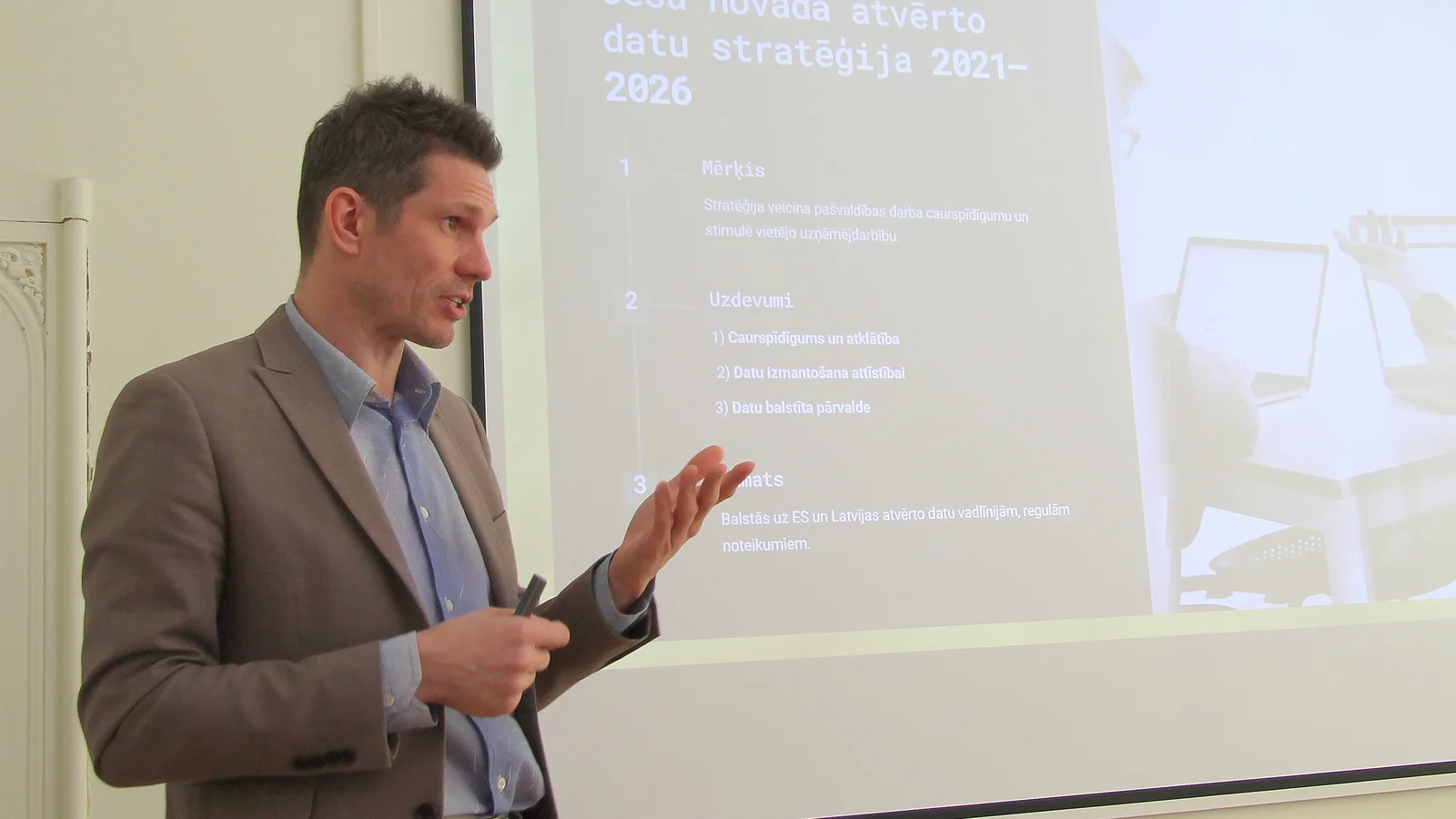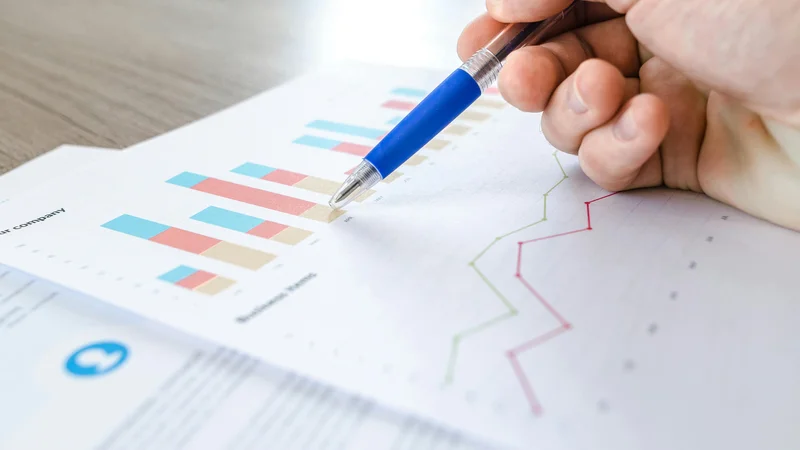On April 4, the Vidzeme Planning Region organized a thematic working group, bringing together local government development and planning specialists, geographical information system specialists, representatives of the Ministry of Smart Administration and Regional Development, and industry experts to jointly discuss ways to improve the development monitoring approach in the region. During the event, the conclusions of the study on the development monitoring system were presented, and the experiences of Cēsis and Riga municipalities were shared. Discussions with the municipalities focused on both the monitoring process and the improvements needed to make it more systematic and effective.
Ieva Kalniņa, Head of the Territorial Planning Department of the Vidzeme Planning Region (VPR), emphasized that improving the monitoring system is a complex but essential task that must be based on close cooperation with local governments and other stakeholders. She explained that a robust monitoring system would not only enable the evaluation of progress toward the objectives defined in planning documents but would also support evidence-based decision-making, thereby strengthening the region’s competitiveness and public trust.
Kalniņa acknowledged that the current monitoring process is fragmented — both municipalities and the region face challenges in obtaining high-quality and comparable data. “It is therefore necessary to address this issue at a broader level—national and regional—so that local governments are supported in implementing a systematic monitoring process,” she stressed. She also emphasized the importance of building on existing practices and sharing success stories that can inspire other professionals. “We want to establish a tradition of meeting regularly with municipal planning specialists to share experiences, discuss current issues, and inspire one another,” Kalniņa said.
This event took place within the framework of the European Union-funded project "PoliRuralPlus." The aim of the project is to develop a concept for a development monitoring system for the Vidzeme region that supports data-driven decision-making. The study on local government experiences and the proposed monitoring system was presented by Līga Brasliņa from the research and innovation agency “InnoMatrix”. She noted, “The field of data acquisition, compilation, and analysis is currently at the epicentre of tectonic change. This shift is driven by the growing volume of data and the rapid development of artificial intelligence technologies. We can’t continue working the old way, but we haven’t yet learned how to work in the new way.”
Brasliņa highlighted existing challenges with fragmented, outdated, and low-quality data. In Latvia, much of the relevant data is not available at the regional level, and manual collection creates a high risk of human error. She emphasized the need for an automated and centralized approach to data processing. As an example, she mentioned the RAIM system, which could serve as the foundation for development monitoring, though it still requires significant upgrades. “Data collection, storage, and preservation as we know them are a thing of the past—now everything must happen in real time using artificial intelligence tools,” Brasliņa added.
The study also reviewed examples from other EU countries. In Germany, companies collaborate in clusters — agreeing on what to collect and how — which improves comparability and decision-making. In Finland and Sweden, data is publicly accessible, regularly updated, and presented in a clear and understandable way. These examples demonstrate how local governments and communities benefit from better access to actionable insights.
Aleksandrs Ļubinskis, Deputy Head of the Cēsis Digital Centre, presented the experience of Cēsis Municipality in developing and implementing its open data strategy. The strategy focuses on improving internal data management, defining responsibilities, and simplifying data collection and storage processes. “We need to understand what data we are already collecting, why we’re doing it, and how to use it for decision-making,” Ļubinskis said. He pointed out that one of the biggest challenges is ensuring timely data updates and stressed the importance of common data standards and regular practices across municipalities. The Cēsis experience, he noted, could serve as a model for others.
Representatives from Riga State City Municipality—Renāte Strautmane, Head of the Strategic Supervision Department, and Andris Ločmanis, Chief Spatial Data Expert—shared the capital’s best practices in monitoring development. They highlighted the need for data to be regularly collected and visualized in a way that is understandable for decision-makers and citizens alike. Riga’s system integrates satellite data and information from mobile operators to track urban development trends. One key challenge, they noted, is achieving comparability of indicators across regions. “A national agreement on a unified data structure is essential—only then can we compare outcomes and make informed decisions,” Ločmanis emphasized.
Two digital tools developed as part of the “PoliRuralPlus” project were also introduced to support work with monitoring data. The tool “Vulture” enables the extraction and structuring of data from an organization’s internal document flows, making it easier to analyze existing information and identify trends, such as how frequently certain topics arise or which sectors are most active. The second tool, “Jackdaw,” is an AI-powered solution that connects spatial data with statistical and open datasets. It creates an integrated view of spatial development trends, supporting better data analysis and planning.
Local government participants agreed on the importance of aligning data collection practices and including consistent questions in public surveys to ensure comparability. Riga's experience was frequently cited as a potential blueprint for Vidzeme.
Participants also emphasized the need for regular data updates and high-quality standards to ensure meaningful analysis. Since data collection is often a manual and time-consuming process, it was proposed that the newly established Artificial Intelligence Centre could help automate data entry, extraction, and analysis in systems maintained by state institutions.
At the conclusion of the event, there was broad consensus that improving regional development monitoring is a necessary and collaborative process—built on reliable data, shared indicators, and strong partnerships between municipalities and regional bodies.
An organized monitoring system would allow municipalities to respond more effectively to citizens’ needs and plan services using real, up-to-date data. The ideas shared during the discussion will form the basis for next steps toward building a system that enables smarter, more transparent decision-making across all Vidzeme municipalities.




Existing Comments